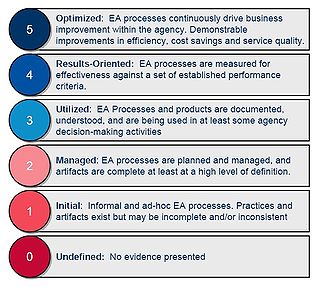Related Research Articles

The Office of Management and Budget (OMB) is the largest office within the Executive Office of the President of the United States (EOP). OMB's most prominent function is to produce the president's budget, but it also examines agency programs, policies, and procedures to see whether they comply with the president's policies and coordinates inter-agency policy initiatives.
The United States budget process is the framework used by Congress and the President of the United States to formulate and create the United States federal budget. The process was established by the Budget and Accounting Act of 1921, the Congressional Budget and Impoundment Control Act of 1974, and additional budget legislation.
A block grant is a grant-in-aid of a specified amount from a larger government to a smaller regional government body. Block grants have less oversight from the larger government and provide flexibility to each subsidiary government body in terms of designing and implementing programs. Block grants, categorical grants, and general revenue sharing are three types of federal government grants-in-aid programs.
As a federal agency, the National Aeronautics and Space Administration (NASA) receives its funding from the annual federal budget passed by the United States Congress. The following charts detail the amount of federal funding allotted to NASA each year over its history to pursue programs in aeronautics research, robotic spaceflight, technology development, and human space exploration programs.

The Federal Information Security Management Act of 2002 is a United States federal law enacted in 2002 as Title III of the E-Government Act of 2002. The act recognized the importance of information security to the economic and national security interests of the United States. The act requires each federal agency to develop, document, and implement an agency-wide program to provide information security for the information and information systems that support the operations and assets of the agency, including those provided or managed by another agency, contractor, or other source.

Alice Mitchell Rivlin was an American economist and budget official. She served as the 16th vice chair of the Federal Reserve from 1996 to 1999. Before her appointment to the Federal Reserve, Rivlin was named director of the Office of Management and Budget in the Clinton administration from 1994 to 1996. Prior to that, she was instrumental in the establishment of the Congressional Budget Office and became its founding director from 1975 to 1983. A member of the Democratic Party, Rivlin was the first woman to hold either of those posts.
The budget of the United States government for fiscal year 2007 was produced through a budget process involving both the legislative and executive branches of the federal government. While the Congress has the constitutional "power of the purse," the President and his appointees play a major role in budget deliberations. Since 1976, the federal fiscal year has started on October 1 of each year.
The Information Technology Management Reform Act of 1996 is a United States federal law, designed to improve the way the federal government acquires, uses and disposes information technology (IT). It was passed as Division E of the National Defense Authorization Act for Fiscal Year 1996. Together with the Federal Acquisition Reform Act of 1996, it is known as the Clinger–Cohen Act.

The Federal Funding Accountability and Transparency Act of 2006 is an Act of Congress that requires the full disclosure to the public of all entities or organizations receiving federal funds beginning in fiscal year (FY) 2007. The website USAspending.gov opened in December 2007 as a result of the act, and is maintained by the Office of Management and Budget. The Congressional Budget Office estimates S. 2590 will cost $15 million over its authorized time period of 2007–2011.
Nutrition Assistance for Puerto Rico (NAP) —Spanish: Programa de Asistencia Nutricional (PAN) popularly known in Puerto Rico as Cupones — is a federal assistance nutritional program provided by the United States Department of Agriculture (USDA) solely to Puerto Rico. In 2021, over $2 billion USD was appropriated as a block grant for NAP to assist over 1 million impoverished residents of Puerto Rico. It is based on, though not part of, the USDA's national Supplemental Nutrition Assistance Program (SNAP) which in 2018 provided $64 billion in nutritional assistance to 42 million people in the 50 U.S. states, D.C., Guam and the US Virgin Islands.

Marcus C. Peacock was the minority staff director at the U.S. Senate Committee on the Budget. He is a former Deputy Administrator of the United States Environmental Protection Agency (EPA). He served at the EPA from August 8, 2005 to January 20, 2009. Marcus Peacock currently works as the Chief Operating Officer at Business Roundtable.
Business.gov is sponsored by the U.S. Small Business Administration to provide small business owners with access to federal, state and local government resources from a single access point.
EINSTEIN was originally an intrusion detection system that monitors the network gateways of government departments and agencies in the United States for unauthorized traffic. The software was developed by the United States Computer Emergency Readiness Team (US-CERT), which is the operational arm of the National Cyber Security Division (NCSD) of the United States Department of Homeland Security (DHS). The program was originally developed to provide "situational awareness" for the civilian agencies. While the first version examined network traffic and subsequent versions examined content, the current version of EINSTEIN is significantly more advanced.
The United States federal budget for fiscal year 2009 began as a spending request submitted by President George W. Bush to the 110th Congress. The final resolution written and submitted by the 110th Congress to be forwarded to the President was approved by the House on June 5, 2008.

The Enterprise Architecture Assessment Framework (EAAF) is created by the US Federal government Office of Management and Budget (OMB) to allow federal agencies to assess and report their enterprise architecture activity and maturity, and to advance the use of enterprise architecture in the federal government.

Shelley Hope Metzenbaum is an American nonprofit executive, academic, and former government official specializing in public sector performance management. She was the founding president of the Volcker Alliance and worked in the Office of Management and Budget during the Obama administration. Metzenbaum is a fellow of the National Academy of Public Administration.

The Networking and Information Technology Research and Development (NITRD) program consists of a group of U.S. federal agencies to research and develop information technology (IT) capabilities to empower Federal missions; support U.S. science, engineering, and technology leadership; and bolster U.S. economic competitiveness.
The Federal Statistical System of the United States is the decentralized network of federal agencies which produce data and official statistics about the people, economy, natural resources, and infrastructure of the United States.

The Federal Information Technology Acquisition Reform Act made changes to the ways the U.S. federal government buys and manages computer technology. It became law as a part of the National Defense Authorization Act for Fiscal Year 2015 (Title VIII, Subtitle D, H.R. 3979.

Mark Steven Sandy is an American career official with the U.S. federal government. He served as acting director of the Office of Management and Budget (OMB) from January 20 to February 16, 2017. As of November 2019, he was the Deputy Associate Director for National Security Programs at OMB.
References
- ↑ "FY 2004 Budget Chapter Introducing the PART: Rating the Performance of Federal Programs". whitehouse.gov. February 7, 2005. Archived from the original on 2008-06-16. Retrieved 2008-09-17.
- ↑ Moynihan, Donald P. 2013. "Advancing the Empirical Study of Performance Management: What we learned from the Program Assessment Rating Tool." American Review of Public Administration 43(5):497-515. url=http://www.lafollette.wisc.edu/images/publications/workingpapers/moynihan2013-003.pdf
- ↑ Amelia Gruber (February 7, 2005). "Program assessments factor into Bush plan to trim deficit". govexec.com. Archived from the original on November 6, 2006. Retrieved 2006-12-14.
- ↑ Gilmour, J.B., & Lewis, D.E. (2006). Assessing performance budgeting at OMB: The influence of politics, performance, and program size. Journal of Public Administration Research and Theory 16:169-86.
- ↑ Amelia Gruber (March 4, 2004). "OMB seeks agency outreach on linking performance to budgets". govexec.com. Archived from the original on May 10, 2006. Retrieved 2006-12-14.
- ↑ Moynihan, D.P. (2008). The Dynamics of Performance Management: Constructing Information and Reform. Washington D.C.: Georgetown University Press.
- ↑ Redburn, F.S. & Newcomer, K. (2008). Achieving Real Improvement in Program performance and Policy Outcomes: The Next Frontier. Washington D.C.: National Academy of Public Administration.
- ↑ Frisco, V. & Stalebrink, O.J. (2008). Congressional Use of the Program Assessment Rating Tool. Public Budgeting and Finance 28, 1-19.
- ↑ Keith Miller and Alison Acosta Fraser (January 9, 2004). ""PART" of the Solution: The Performance Assessment Ratings Tool". Heritage Foundation. Retrieved 2006-12-19.
- ↑ "Program Assessment Rating Tool". Government Innovators Network. January 1, 2006. Retrieved 2006-12-15.